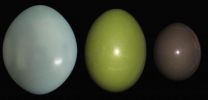(Press-News.org) PHOENIX, Ariz. -- Dec. 12, 2014 -- Using a basic genetic difference between men and women, the Translational Genomics Research Institute (TGen) has uncovered a way to track down the source of a neurological disorder in a young girl.
TGen's discovery relies on a simple genetic fact: Men have one X and one Y chromosome, while women have two X chromosomes. This women-only factor was leveraged by TGen investigators to develop a highly accurate method of tracking down a previously unrecognized disorder of the X-chromosome.
The study of a pre-teen girl, who went years with an undiagnosed neurobehavioral condition, was published today in the scientific journal PLOS ONE.
TGen's findings were made within its Dorrance Center for Rare Childhood Disorders, where investigators and clinicians apply the latest tools of genomic medicine to provide answers for parents seeking to identify the disease or disorder affecting their child.
The scientists sequenced, or spelled out in order, the complete genetic codes of DNA and RNA of the girl. Because girls inherit an X chromosome from each of their parents (boys inherit a Y chromosome from their father), they also sequenced her mother and father. On average, about half of all X chromosomes active in a female come from the mother and the other half from the father.
"We now have the tools to significantly accelerate the diagnostic process, reducing the need for children to undergo multiple tests that can be emotionally and physically taxing for the entire family," said Dr. David Craig, TGen's Deputy Director of Bioinformatics, Co-Director of the Dorrance Center and the paper's senior author.
Sequencing would reveal the proportion of X chromosomes, and if disproportionate, whether the more abundant of the two were damaged in some way, which often leads to X-linked genetic conditions.
"At the time of enrollment, we suspected the girl had a complex neurobehavioral condition, based on her attention deficit, and delays in development and learning," said Dr. Vinodh Narayanan, Medical Director of the Dorrance Center. "Her brain MRI scans were normal. We needed to find out more -- at the genetic level -- about what might be causing her disorder."
By sequencing the DNA and RNA, TGen investigators were able to precisely identify which cells contained active X chromosomes from the girl's mother, which contained active X chromosomes from the father, in what proportions, and whether they were associated with any known disorders.
They discovered that the X chromosome from the father contained a segment shown to be associated with neurobehavioral conditions. Interestingly, however, the proportion of X chromosomes active in the girl's cells skewed toward the normal X inherited from her mother. This skewing may have led to a milder, harder to diagnose condition undetected by conventional methods.
"This study shows the power sequencing holds when scanning for potential disease causing and disease-modifying genetic variations," said Dr. Matt Huentelman, the other Co-Director of the Dorrance Center and an author of the PLOS ONE paper. "I'm most excited to see the pace at which TGen has pushed the genome sequencing technology to where it can help patients -- today."
TGen Research Associate Szabolcs Szelinger, the paper's lead author, said: "With just a small bio sample, we are now able to provide a comprehensive evaluation of the effects that genetic variation has on patients, leading to highly personalized treatment options, while at the same time providing researchers with insights into the underlying molecular processes."
INFORMATION:
Since opening in October 2013, TGen's Dorrance Center for Rare Childhood Disorders Dorrance Center has enrolled nearly 300 families. And with the rapid decrease in sequencing costs and improved analytical methods, comprehensive, integrative sequencing approaches will likely be used more in the future. Information on the Dorrance Center is available at http://www.c4rcd.org.
Funding for the study came from the State of Arizona, the Stardust Foundation, and donations to the TGen Foundation.
About TGen
Translational Genomics Research Institute (TGen) is a Phoenix, Arizona-based non-profit organization dedicated to conducting groundbreaking research with life changing results. TGen is focused on helping patients with cancer, neurological disorders and diabetes, through cutting edge translational research (the process of rapidly moving research towards patient benefit). TGen physicians and scientists work to unravel the genetic components of both common and rare complex diseases in adults and children. Working with collaborators in the scientific and medical communities literally worldwide, TGen makes a substantial contribution to help our patients through efficiency and effectiveness of the translational process. For more information, visit: http://www.tgen.org.
Press Contact:
Steve Yozwiak
TGen Senior Science Writer
602-343-8704
syozwiak@tgen.org
With the ball at the three-point line near the top of the key, what will Tim Duncan of the NBA's San Antonio Spurs do? Pass to a player posting up? Or does he take a shot? An analysis by Disney Research of player tracking data, however, suggests the highest probability is a pass to guard Tony Parker on his left.
It's just one play, by one player, in one sport - and perhaps not that hard for the average courtside observer to anticipate - but with the field of sports becoming more driven by sports analytics, predicting the next thing that a player will do has become a major ...
A new National Science Foundation (NSF) report reveals the number of U.S. citizen doctoral graduates in science, engineering and health fields, who remain in the United States, tracks closely with their intent to stay in the United States at the time of graduation. However, there are noticeable differences for doctoral graduates who were temporary visa holders at the time of graduation.
According to the report, 96.4 percent of U.S. citizen doctoral graduates from academic years 2001-09 reported their intent to live in the United States, a measure referred to as the expected ...
December 12, 2014 - All children should undergo vision health screening between age 36 and 72 months--preferably every year--using evidence-based test methods and with effective referral and follow-up, according to recommendations published in the January issue of Optometry and Vision Science, official journal of the American Academy of Optometry. The journal is published by Lippincott Williams & Wilkins, a part of Wolters Kluwer Health.
The National Expert Panel to The National Center for Children's Vision Health makes recommendations for vision health screening in ...
MADISON, Wis. - As a fundamental unit of life, the cell is central to all of biology. Better understanding how complex cells evolved and work promises new revelations in areas as diverse as cancer research and developing new crop plants.
But deep thinking on how the eukaryotic cell came to be is astonishingly scant. Now, however, a bold new idea of how the eukaryotic cell and, by extension, all complex life came to be is giving scientists an opportunity to re-examine some of biology's key dogma.
All complex life -- including plants, animals and fungi -- is made up of ...
The genomes of modern birds tell a story: Today's winged rulers of the skies emerged and evolved after the mass extinction that wiped out dinosaurs and almost everything else 66 million years ago.
That story is now coming to light, thanks to an international collaboration that has been underway for four years.
The first findings of the Avian Phylogenomics Consortium are being reported nearly simultaneously in 23 papers--eight papers in a special issue this week of Science, and 15 more in Genome Biology, GigaScience and other journals.
The results are funded in part ...
An ancient meteorite and high-energy X-rays have helped scientists conclude a half century of effort to find, identify and characterize a mineral that makes up 38 percent of the Earth.
And in doing so, a team of scientists led by Oliver Tschauner, a mineralogist at the University of Las Vegas, clarified the definition of the Earth's most abundant mineral - a high-density form of magnesium iron silicate, now called Bridgmanite - and defined estimated constraint ranges for its formation. Their research was performed at the Advanced Photon Source, a U.S. Department of Energy ...
Chicago, IL, and New Haven, CT, December 12, 2014 - The Yale School of Forestry & Environmental Studies and The Associated Press-NORC Center for Public Affairs Research today released the first set of findings from its inaugural environment poll. The poll surveys a nationally representative sample of American adults and provides a portrait of what the public thinks and feels about environmental issues, and what actions they are taking as consumers.
Findings from the first report indicate that most Americans say the United States ought to take a leadership role in combating ...
VIDEO:
A wide-field movie by GOES-WEST of the North Pacific from Dec. 9-12, 2014 reveals the violent rain storms pouring moisture on the "Pineapple Express " jet stream into California in mid-December....
Click here for more information.
The ''Pineapple Express'' happens when warm air and lots of moisture are transported from the Central Pacific, near Hawaii, to the Eastern Pacific Ocean. An animation of satellite imagery from NOAA's GOES-West satellite showed the stream of ...
Tropical Cyclone Bakung is moving in a westerly direction over the open waters of the Southern Indian Ocean and NASA's Aqua satellite captured an image of the sea storm.
Aqua passed over Bakung on Dec. 12 at 07:35 UTC (2:35 a.m. EST) and the MODIS instrument aboard took a visible image of the storm. The image showed that deeper convection (stronger currents of rising air that form the thunderstorms that make up the tropical cyclone) was occurring around the low-level center of circulation, so the center was not apparent in the MODIS imagery. The bulk of the clouds associated ...
Splashy blue and green hues pop from under the glassy finish of the Tinamou species' (bird relatives of ostriches, rheas and emus) eggs. Pigments covered by a thin, smooth cuticle reveal the mystery behind these curious shells, University of Akron researchers discovered. The finding could lead to the development of glossy new coatings for
ceramics and floors, potentially enhancing their aesthetic qualities and durability.
After removing the outer layer of the eggshells and examining their chemistry and nanostructure, the researchers discovered the presence of a weak ...



